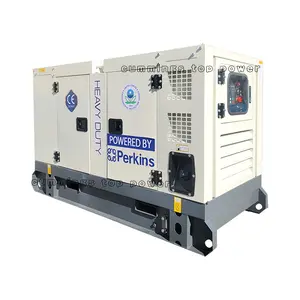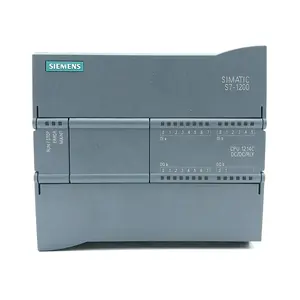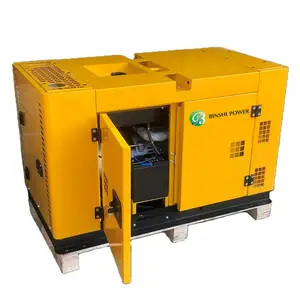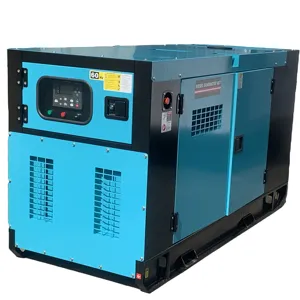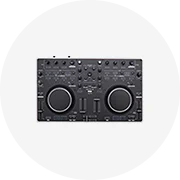Phổ biến trong ngành của bạn

Điện 10 AWG Cáp Rắn THHN THWN-2 Bị Mắc Kẹt Đồng Xây Dựng Dây Đo Giá Mỗi Chân
0,20 US$
Đơn hàng tối thiểu: 1000 Mét


SY MIL-W-22759/16 600V 24AWG 19/0.12 TPC bán điện etfe 24 AWG tefzel dây
0,12 US$ - 0,25 US$
Đơn hàng tối thiểu: 1 Mét
Vận chuyển mỗi chiếc: 12,20 US$


Siêu mềm 16awg 17awg 18AWG 19awg 20AWG 21AWG 22AWG 23AWG 24AWG Silicone Dây cáp cho không người lái trên không xe
0,02 US$ - 5,52 US$
Đơn hàng tối thiểu: 100 Mét
Vận chuyển mỗi chiếc: 2,45 US$


Ul1569 bị mắc kẹt treo lên dây điện tử 30/28/26/24/22/20/18/16 AWG 105C 300V trong thiết bị gia dụng
0,05 US$ - 1,00 US$
Đơn hàng tối thiểu: 610 Mét


Dây cáp điện Kích thước AWG 4 6 8 10 12 14 bị mắc kẹt đồng Nylon điện thwn thhn xây dựng Cáp
0,10 US$ - 2,00 US$
Đơn hàng tối thiểu: 100 Mét

Cáp Cao Su Silicon Làm Nóng 600V 4 Awg 6 8 10 12 14 18 22 24 26 28 Awg Dây Silicon Điện Siêu Linh Hoạt
0,10 US$ - 5,00 US$
Đơn hàng tối thiểu: 100 Mét

18 Awg 12 Pin Flex Cầu Vồng Phẳng Ribbon Dây Cáp, Ribbon Cáp
0,80 US$ - 1,00 US$
Đơn hàng tối thiểu: 3000 Mét

THHN Dây Cáp Kích Thước AWG 8 10 12 14 Đồng Nylon Điện Xây Dựng Cáp
0,01 US$ - 2,99 US$
Đơn hàng tối thiểu: 100 Mét

UL 83 Tiêu Chuẩn 12 AWG 18 Awg Cáp THHN/THWN/THW/TW Cáp Dây
0,10 US$ - 10,00 US$
Đơn hàng tối thiểu: 15000 Mét


Mysun UL3074 Nhiệt Độ Cao Dệt Cáp Silicone Sợi Thủy Tinh Dây Cáp
0,05 US$ - 0,10 US$
Đơn hàng tối thiểu: 305 Mét


Nhà Máy Trực Tiếp Đồng Mạ Dây Nhôm 30 Awg Bị Mắc Kẹt 12 Gauge
2,00 US$ - 12,00 US$
Đơn hàng tối thiểu: 300 Kilogram

Pvc 7 dây bị mắc kẹt tinh khiết dây dẫn đồng 8 10 12 14 AWG 600V thw TW dây điện và cáp cho nhà hệ thống dây điện
0,11 US$ - 5,95 US$
Đơn hàng tối thiểu: 5000 Mét

USA kho ltc12 12 12 AWG/2C 500ft ulecc chiếu sáng cảnh quan dây ngầm điện áp thấp ngoài trời trực tiếp chôn cất cảnh quan Cáp
Sẵn sàng vận chuyển
155,00 US$
Đơn hàng tối thiểu: 1 Cái
Vận chuyển mỗi chiếc: 32,25 US$

Trung Quốc cung cấp cao linh hoạt mềm Silicone dây điện 4awg 6awg 8awg 10awg 12 AWG 14 AWG 16awg silicon Cáp
3,95 US$ - 4,50 US$
Đơn hàng tối thiểu: 100 Mét

Thhn dây và cáp yuekai Cáp Nhà Máy Giá wsteelale đồng trần đồng PVC cách điện Nylon bị mắc kẹt 2 4 6 8 10 AWG 12 Máy đo
0,10 US$ - 1,00 US$
Đơn hàng tối thiểu: 1 Hộp

UL Giấy Chứng Nhận Đồng Pvc Cách Điện Dây Điện Thw/Tw Dây Điện Awg Kích Thước 14 12 10 8 6 4 2 Dây Điện
0,20 US$ - 0,70 US$
Đơn hàng tối thiểu: 1000 Mét

Cáp đồng cáp điện dây đồng PVC 0.75mm 1mm 1.5mm 2.5mm 4mm 6mm 10mm 16mm 25mm đỏ AWG 2 4 6 8 10 12 14 16 18 20
0,13 US$ - 0,20 US$
Đơn hàng tối thiểu: 10000 Mét
Vận chuyển mỗi chiếc: 2,88 US$




Dây Cáp 3 4 6 8 10 12 Dây Cáp Dẹt IDC Awm 2468 Vw 1 80c 300V Ul 2468 20 Awg 300V Dây Cáp Dẻo Song 20 Thước Dây Điện
0,08 US$ - 0,80 US$
Đơn hàng tối thiểu: 1220 Mét

Nhiệt Độ Cao Linh Hoạt Mềm Silicone Dây Điện 4 AWG 8 10 12 14 16 18 20 22 AWG 24 AWG Silicon Cáp
0,10 US$ - 0,30 US$
Đơn hàng tối thiểu: 1000 Mét

Chất Lượng Cao Mềm Cáp 10 Mét Thêm Mềm Ở Nhiệt Độ Cao Silicone Dây 10 11 12 13 14 15 16 17 18 20 22 24 26 AWG
11,64 US$ - 12,00 US$
Đơn hàng tối thiểu: 1 Cái

600V 2Awg 4 Awg 6Awg 10Awg 12 Awg Dây Điện Đồng THHN Dây Xây Dựng Cáp 500 Ft Đen
0,20 US$ - 2,00 US$
Đơn hàng tối thiểu: 100 Mét

2020 Năm Chất Lượng Cao Copper Conductor PVC Cách Điện Nylon Bọc AWG 1 THNN Dây #12 THHN Dây #10
Sẵn sàng vận chuyển
1,10 US$ - 1,20 US$
Đơn hàng tối thiểu: 1000 Mét
Vận chuyển mỗi chiếc: 3,58 US$

Dây dẫn linh hoạt chịu nhiệt độ cao dây điện và cáp dây điện áp cao đóng hộp đồng AWG 12 14 16 Silicone cao su
1,30 US$ - 1,50 US$
Đơn hàng tối thiểu: 1 Mét

Chiến thắng Cáp nhà máy ul1007 Mỹ tiêu chuẩn điện dây cáp PVC cách nhiệt đồng 12 AWG
0,02 US$
Đơn hàng tối thiểu: 610 Mét

Điện áp thấp điện 12/2 AWG 500ft Cáp 600V thhn dây 14 12 10 AWG đồng
Sẵn sàng vận chuyển
115,06 US$
Đơn hàng tối thiểu: 5 Cái
Vận chuyển mỗi chiếc: 37,00 US$

Đo nhiệt độ cao chịu nhiệt rắn đồng cao su Cáp Silicone dây 4 6 7 8 10 12 14 16 18 20 22 24 AWG
Sẵn sàng vận chuyển
0,20 US$ - 53,10 US$
Đơn hàng tối thiểu: 1 Mét
Vận chuyển mỗi chiếc: 0,00 US$

Trung Quốc Nhà máy cung cấp thw thwn thhn dây 12 AWG 14 AWG PVC cách nhiệt Nylon điện dây cáp
0,10 US$ - 1,15 US$
Đơn hàng tối thiểu: 1000 Mét

Thhn Dây Cáp Kích Thước Awg 8 10 12 14 Đồng Nylon Điện Xây Dựng Cáp
1,00 US$ - 10,00 US$
Đơn hàng tối thiểu: 500 Mét

Dây Điện Silicon Mềm AFF Chịu Nhiệt Độ Cao, 4 AWG 8 10 12 14 16 18 20 22
0,05 US$ - 0,10 US$
Đơn hàng tối thiểu: 100 Mét

Xây Dựng Hộ Gia Đình THHN Cáp Đồng Điện 14AWG 12 AWG 8AWG 6AWG Dây Với Nylon Cover
0,09 US$ - 1,88 US$
Đơn hàng tối thiểu: 8000 Mét

Trung Quốc Nhà máy cung cấp thw thwn thhn dây 12 AWG 14 AWG PVC cách nhiệt Nylon electrico Cáp
0,20 US$ - 0,25 US$
Đơn hàng tối thiểu: 100 Mét

12 Awg 10 Awg 6 Awg Mắc Kẹt Thwn Pvc Cách Điện Nylon Áo Khoác Đồng Thhn Dây Xây Dựng
0,23 US$ - 0,30 US$
Đơn hàng tối thiểu: 5000 Mét
Vận chuyển mỗi chiếc: 10,01 US$

Chất Lượng Cao Nhiệt Độ Nhiệt AWG 8 10 12 14 16 18 Linh Hoạt Cáp Điện Đa Dây Dẫn Cáp Silicone Dây
0,20 US$ - 2,00 US$
Đơn hàng tối thiểu: 100 Mét

Ul83 thhn thwn hộ gia đình Cáp 600V 2awg 4 AWG 6awg 10awg 12 AWG đồng dây điện thhn Cáp xây dựng dây 500 FT Đen
0,10 US$ - 8,15 US$
Đơn hàng tối thiểu: 100 Mét
Vận chuyển mỗi chiếc: 3,00 US$
Các danh mục hàng đầu
Giới thiệu về dây 12 awg
Mua dây 12 awg từ các nhà cung cấp đáng tin cậy trên Alibaba.com và nhận sản phẩm được giao tận nơi. Những dây này có thể hữu ích trong các hộ gia đình cũng như trong nhiều ngành công nghiệp. Chúng chuyển đổi điện năng thành nhiệt năng bằng cách sử dụng một dây điện có độ bền cao. Có nhiều loại sản phẩm có sẵn ở dạng thẳng và dạng cuộn để đáp ứng các yêu cầu về độ dẫn điện.
Có nhiều dây 12 awg bao gồm các vật liệu khác nhau và có kích thước khác nhau để mua trên Alibaba.com. Các dây được làm bằng kim loại như nichrome, đồng hoặc các hợp kim khác. Các đặc tính của kim loại ảnh hưởng đến hoạt động của thiết bị tổng thể và các ứng dụng tiếp theo của chúng. Các tùy chọn phổ biến nhất là dây nichrome vì bản chất lý tưởng của chúng. Chúng không chỉ có khả năng chống chịu cao mà còn tạo thành một lớp oxit xung quanh, do đó bảo vệ các lớp bên trong. Dây Kanthal là một lựa chọn khác và bao gồm nhôm, crom và sắt. Để sưởi ấm ở nhiệt độ thấp, dây cupronickel là lý tưởng.
dây 12 awg được sử dụng rộng rãi do có nhiều đặc tính mong muốn mà chúng có. Chúng có thể chịu được nhiệt độ cực cao, chống lại quá trình oxy hóa và chống lại sự ăn mòn từ các yếu tố môi trường như độ ẩm. Chúng có một số ứng dụng trong gia đình như lò nướng bánh mì hoặc máy sấy tóc. Chúng cũng hữu ích trong các ngành công nghiệp khác nhau bao gồm hàng không vũ trụ, chẩn đoán y tế và xây dựng. Một số kiểu máy cung cấp hệ thống sưởi đường đi, hệ thống sưởi sàn và hệ thống sưởi mái.
Hãy chọn từ danh sách độc quyền của dây 12 awg để tìm sản phẩm chất lượng tốt nhất đáp ứng yêu cầu. Những loại dây này rất linh hoạt và có một số ứng dụng trong cả hộ gia đình và công nghiệp. Chúng có cấu trúc ổn định, chịu được nhiệt độ cao và được tạo ra để tồn tại trong thời gian dài. Truy cập Alibaba.com và nhận các sản phẩm cao cấp cho các yêu cầu sưởi ấm với giá cả phải chăng.
Có nhiều dây 12 awg bao gồm các vật liệu khác nhau và có kích thước khác nhau để mua trên Alibaba.com. Các dây được làm bằng kim loại như nichrome, đồng hoặc các hợp kim khác. Các đặc tính của kim loại ảnh hưởng đến hoạt động của thiết bị tổng thể và các ứng dụng tiếp theo của chúng. Các tùy chọn phổ biến nhất là dây nichrome vì bản chất lý tưởng của chúng. Chúng không chỉ có khả năng chống chịu cao mà còn tạo thành một lớp oxit xung quanh, do đó bảo vệ các lớp bên trong. Dây Kanthal là một lựa chọn khác và bao gồm nhôm, crom và sắt. Để sưởi ấm ở nhiệt độ thấp, dây cupronickel là lý tưởng.
dây 12 awg được sử dụng rộng rãi do có nhiều đặc tính mong muốn mà chúng có. Chúng có thể chịu được nhiệt độ cực cao, chống lại quá trình oxy hóa và chống lại sự ăn mòn từ các yếu tố môi trường như độ ẩm. Chúng có một số ứng dụng trong gia đình như lò nướng bánh mì hoặc máy sấy tóc. Chúng cũng hữu ích trong các ngành công nghiệp khác nhau bao gồm hàng không vũ trụ, chẩn đoán y tế và xây dựng. Một số kiểu máy cung cấp hệ thống sưởi đường đi, hệ thống sưởi sàn và hệ thống sưởi mái.
Hãy chọn từ danh sách độc quyền của dây 12 awg để tìm sản phẩm chất lượng tốt nhất đáp ứng yêu cầu. Những loại dây này rất linh hoạt và có một số ứng dụng trong cả hộ gia đình và công nghiệp. Chúng có cấu trúc ổn định, chịu được nhiệt độ cao và được tạo ra để tồn tại trong thời gian dài. Truy cập Alibaba.com và nhận các sản phẩm cao cấp cho các yêu cầu sưởi ấm với giá cả phải chăng.

